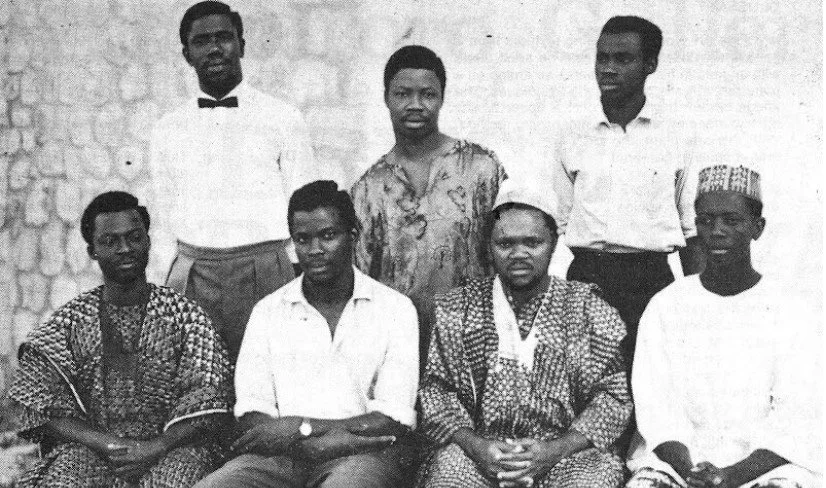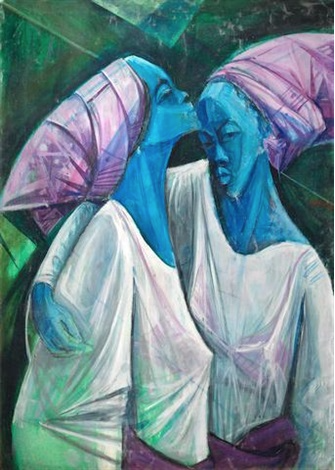The Zaria Art Society: Reclaiming African Art Through Vision, Not Rebellion
ZARIA ART SOCIETY
sourced from ucheokekelegacy.com
In the 1950s, a group of Nigerian art students at Ahmadu Bello University came together—not to rebel, but to redefine views on African art. They would later be known as the Zaria Art Society or informally, the Zaria Rebels, a collective whose mission was simple but profound: to reclaim the African identity in modern art.
This was not about rejecting tradition or Western technique. It was about restoring African meaning, symbolism, and cultural soul to the canvas.
Who Were They?
The Zaria Art Society was formed in 1958 by a group of talented students including:
Uche Okeke
Bruce Onobrakpeya
Yusuf Grillo
Simon Okeke
Demas Nwoko
These artists were all trained in European formal styles, but they questioned the absence of African voices in their curriculum and exhibitions. Their goal was not to destroy what they learned—but to deepen it with African truth.
While these five names are often spotlighted as the faces of the movement, the Zaria Art Society was far more expansive and collaborative in spirit. Artists such as Jimoh Akolo, Oseloka Osadebe, Ogbonaya Nwagbara, Emmanuel Odita, S. Irein Wangboje, and William Olaosebikan also played vital roles in shaping its trajectory and impact. Their contributions were equally significant and reflect the collective brilliance of the society.
***This article focuses on the initiative and philosophical grounding of the Zaria Art Society as a whole—its shared vision, not individual personalities—because it is that collective impulse toward cultural reclamation that continues to influence modern and contemporary African art today.
They coined the term “Natural Synthesis”, a philosophy that combined Western techniques with African aesthetics, folklore, and philosophy. Their art was bold, deeply rooted, and unapologetically Nigerian.
“THE LAST SUPPER” by Bruce Onobrakpeya
sourced from SMOContemporaryart.com
Why It Still Matters
The Zaria Art Society laid the foundation for what modern African art could be: technically excellent, culturally grounded, and spiritually rich. They weren’t just creating art, they were giving context to the rich tapestry of the culture.
Their work gave permission to future generations of African artists to stop asking for visibility and instead, create from cultural conviction.
Today, their influence runs deep through the work of artists across Africa and the diaspora who embrace storytelling, symbolism, and heritage as central to their practice.
“AYI AND TAYI” by Yusuf Grillo
Oil on canvas
sourced from artnet.com
What We’re Carrying Forward
At Infinite Treasures, we stand on the shoulders of movements like the Zaria Art Society. Their vision lives on in the artists we represent—those who are not painting for the algorithm or foreign gaze, but who are crafting work from history, faith, and unshakable identity.
We believe that art as told through the African eye is not a rebellion, it is a restoration.
Not a reaction to colonial rule, but a revelation of our true identity and culture.
“PRIMEVAL FOREST” by Uche Okeke
Oil on wood, 1965
sourced from ucheokekelegacy.com
“The duty of the African artist is to make art that speaks the language of his people.”
— Uche Okeke
A Living Legacy
We honour the Zaria Art Society not as a past movement, but as a living blueprint. Through our platform, we continue their mission—to present African art as a voice of value, depth, and spiritual resonance on the global stage.
Because art rooted in truth never fades. It multiplies.
Their vision reshaped African art. Ours is to carry it forward.
Discover contemporary African artists continuing the legacy of storytelling, cultural depth, and creative conviction.
Browse Our Curated Collections→
Inspired by their legacy?
We’re building a platform that honours your voice.
Submit Your Portfolio→
The legacy of African excellence continues.
Start your own collection rooted in story, skill, and spirit.
Start Collecting African Art →





